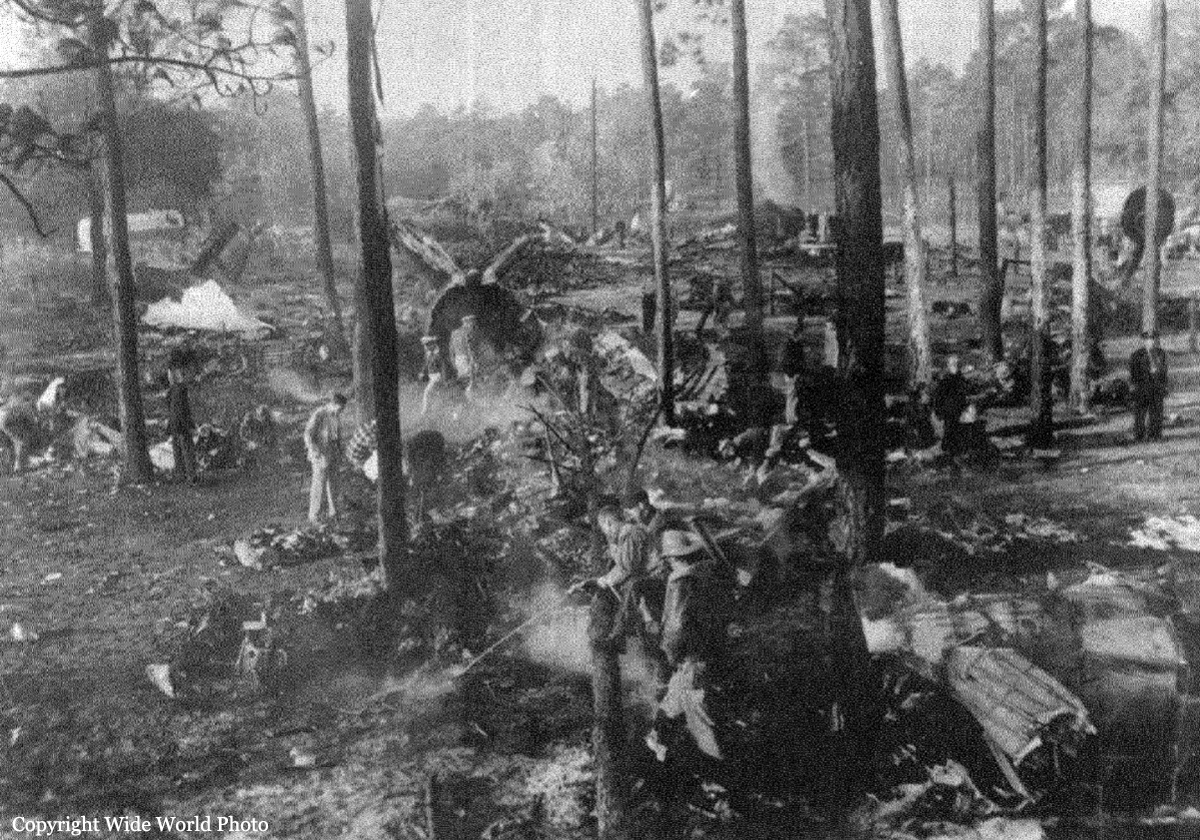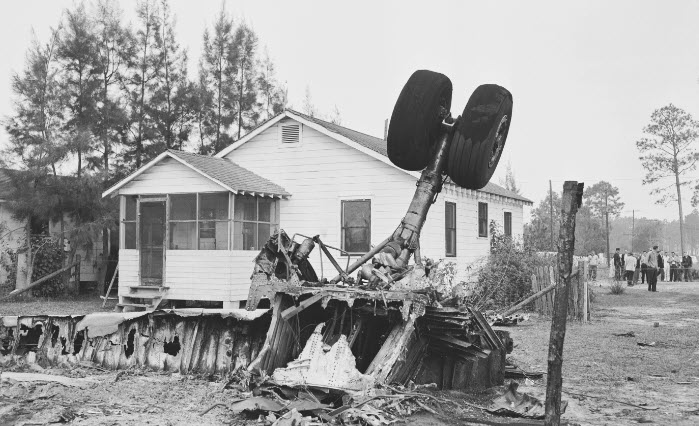Crash of a Beechcraft 65 Queen Air in Jacksonville: 5 killed
Date & Time:
Jan 10, 1974 at 1658 LT
Registration:
N671T
Survivors:
Yes
Schedule:
Jacksonville – Freeport
MSN:
LC-1
YOM:
1960
Crew on board:
2
Crew fatalities:
Pax on board:
4
Pax fatalities:
Other fatalities:
Total fatalities:
5
Captain / Total hours on type:
30.00
Circumstances:
Shortly after takeoff from Jacksonville-Intl Airport, while in initial climb, the right engine failed. The crew failed to feather the propeller and the airplane went out of control and crashed. A passenger was seriously injured while all five other occupants were killed. The aircraft was destroyed by impact forces.
Probable cause:
Uncontrolled descent during initial climb following an engine failure. The following factors were reported:
- Inadequate inspection of aircraft,
- Failed to maintain flying speed,
- Failed to follow the approved procedures,
- Improper emergency procedures,
- Failure of the ignition system: spark plugs,
- Carbon deposit,
- Engine structure: blower and impeller assembly,
- Material failure,
- Inadequate preflight preparation,
- Improperly loaded aircraft and CofG,
- Complete failure of the right engine,
- Poor general maintenance,
- Plugs fouled,
- Propeller not feathered,
- Right engine incapable full power,
- Aircraft 798 lbs over gross weight,
- CofG 2.9 inches after rear limit.
- Inadequate inspection of aircraft,
- Failed to maintain flying speed,
- Failed to follow the approved procedures,
- Improper emergency procedures,
- Failure of the ignition system: spark plugs,
- Carbon deposit,
- Engine structure: blower and impeller assembly,
- Material failure,
- Inadequate preflight preparation,
- Improperly loaded aircraft and CofG,
- Complete failure of the right engine,
- Poor general maintenance,
- Plugs fouled,
- Propeller not feathered,
- Right engine incapable full power,
- Aircraft 798 lbs over gross weight,
- CofG 2.9 inches after rear limit.
Final Report:







